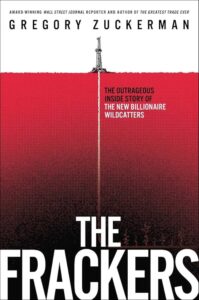Dear Readers,
Spring is here, and while the flowers are blooming, the energy markets are still trying to find their rhythm. Crude oil supplies are building, bunker fuel markets are adapting to new regulations, and fuel oil trade flows are shifting in unexpected ways. This month, we break it all down in a way that’s easy to digest—because let’s be honest, oil markets may be complex, but they don’t have to be boring!
Crude Oil Market Overview
Crude oil prices have been on a bit of a rollercoaster, with Brent hovering around $70 per barrel as supply continues to outweigh demand. U.S. crude oil inventories climbed to 437 million barrels, keeping stockpiles about 5% below the five-year average. Meanwhile, refineries are back in action post maintenance, running at 86.9% capacity as they gear up for the summer driving season
But here’s the kicker—imports are down 11% from last year, meaning we’re relying more on domestic production to keep things moving. And while global demand is still growing, it’s not exactly surging, with the IEA predicting a 1.0 million bpd increase in 2025, mainly thanks to China’s booming petrochemical sector.
Bunker Fuel Insights
The bunker fuel market is holding steady, but it’s definitely feeling the squeeze from slower global trade. Ship fuel sales in Singapore and Fujairah are down 9% year-over-year, showing that fewer vessels are hitting the high seas. On the bright side, very-low sulfur fuel oil (VLSFO) demand is holding firm, especially as shipowners work to stay compliant with new IMO 2025 emissions rules.
Prices aren’t seeing big swings, but the transition to alternative marine fuels is picking up steam. Biofuels and LNG bunkering are gaining traction, and some industry players are testing out methanol as a cleaner alternative. One thing’s for sure—regulations are keeping fuel suppliers on their toes.
Fuel Oil Sector Highlights
Fuel oil markets are shaking things up, and trade flows are shifting faster than a New York cab driver in rush hour. Here’s what’s happening: Distillate stocks are down—6% below the five-year average, meaning diesel and heating oil supplies are getting tight. Singapore is loading up—Imports have jumped to a multi-year high of 6.7 million barrels, while exports are at a one-year low of 3.9 million barrels. That means more fuel is staying put, likely due to shifting global demand patterns. Slurry oil is making waves—This essential ingredient in marine fuel and industrial applications is expected to hit $5.23 billion in market value by 2032, proving it’s still a powerhouse in the fuel game
THE CRUDE SIDE: U.S. AND GLOBAL DYNAMICS
The U.S. is still cranking out crude, with production set to rise by 0.6 million bpd in 2025. Between shale oil and offshore drilling, domestic supply is keeping things balanced. Meanwhile, OPEC+ is trying to hold the line on production cuts, but with non-OPEC producers pumping more, their influence isn’t as strong as it used to be. And in trade news, Europe is buying more U.S. crude, while Middle Eastern suppliers are keeping their focus on Asian markets. The bottom line? Crude flows are shifting, and global politics are playing a big role in where barrels end up. If you’re in the trading game, buckle up—it’s going to be an interesting ride.
FUN FACTS: THE EVOLUTION OF OFFSHORE DRILLING
1. The First Pipeline: Built in Pennsylvania in 1865, stretching just five miles (a baby step for the industry!).
2. Longest Pipeline: The Druzhba pipeline spans over 4,000 miles, transporting Russian oil across Europe.
3. Pipelines vs. Trucks: Moving oil by pipeline is 70% cheaper than rail or truck transport.
4. Deepwater Challenges: Subsea pipelines can withstand pressures greater than 10,000 feet
underwater.
5. Eco-Friendly Tech: Modern pipelines use smart leak detection to catch problems before they start.
6. Keystone Legacy: While controversial, the Keystone pipeline system still moves over 600,000 bpd.
7. Speed Racer: Some pipelines move crude at up to 5 miles per hour (fast for oil, slow for everything
else).
8. Alaska’s Arctic Engineering: Pipelines are built above ground to protect permafrost from melting.
9. AI at Work: Most modern pipelines are monitored remotely to boost safety and efficiency.
10. Hydrogen Future: Some companies are testing hydrogen pipelines as part of the shift to alternative
energy
SUGGESTED READING

“THE FRACKERS: THE OUTRAGEOUS INSIDE STORY OF THE NEW BILLIONAIRE WILDCATTERS” BY GREGORY ZUCKERMAN
THIS BOOK IS LIKE THE WOLF OF WALL STREET, BUT FOR OIL. IT TELLS THE WILD RIDE OF HOW A GROUP OF RELENTLESS ENTREPRENEURS TURNED THE U.S. INTO AN ENERGY SUPERPOWER THROUGH HYDRAULIC FRACTURING. IT’S A STORY OF RISK, REWARD, AND THE SHEER GRIT IT TOOK TO CHALLENGE THE INDUSTRY GIANTS. IF YOU LOVE UNDERDOG STORIES AND BIG BUSINESS DRAMA, THIS ONE’S FOR YOU.
FINAL THOUGHTS
March 2025 is shaping up to be a month of shifting tides, with crude supply adjustments, regulatory changes, and new energy strategies unfolding. Whether you’re in the trading world, the refining sector, or just keeping tabs on the industry, one thing is clear—oil markets never stand still.
The Signal Fluid Solutions team would like to take this time to thank you for your business and thank you for allowing us to be an important part of you supply team.
Tyler Jordan – Oil Trading Manager – 909-203-0237




